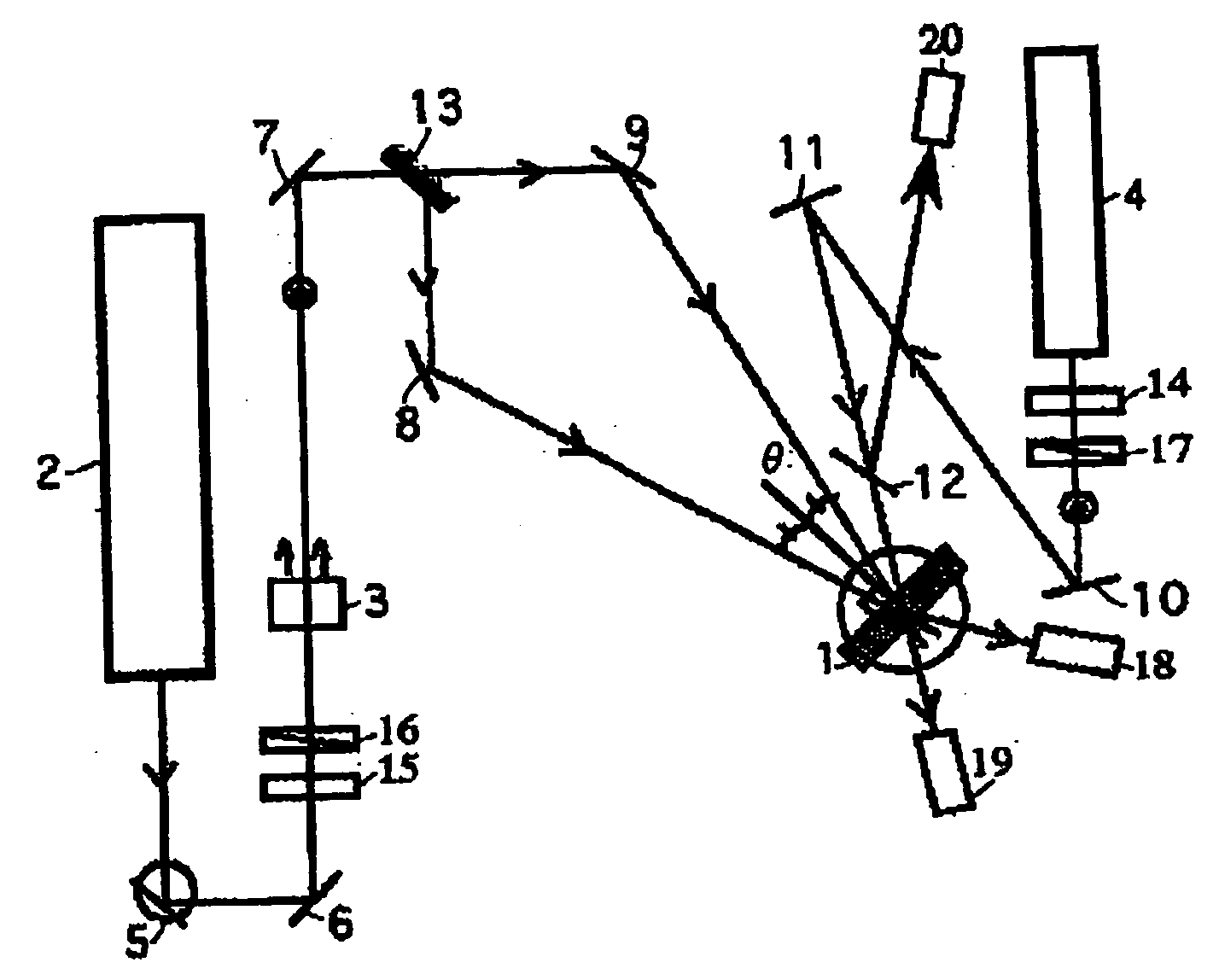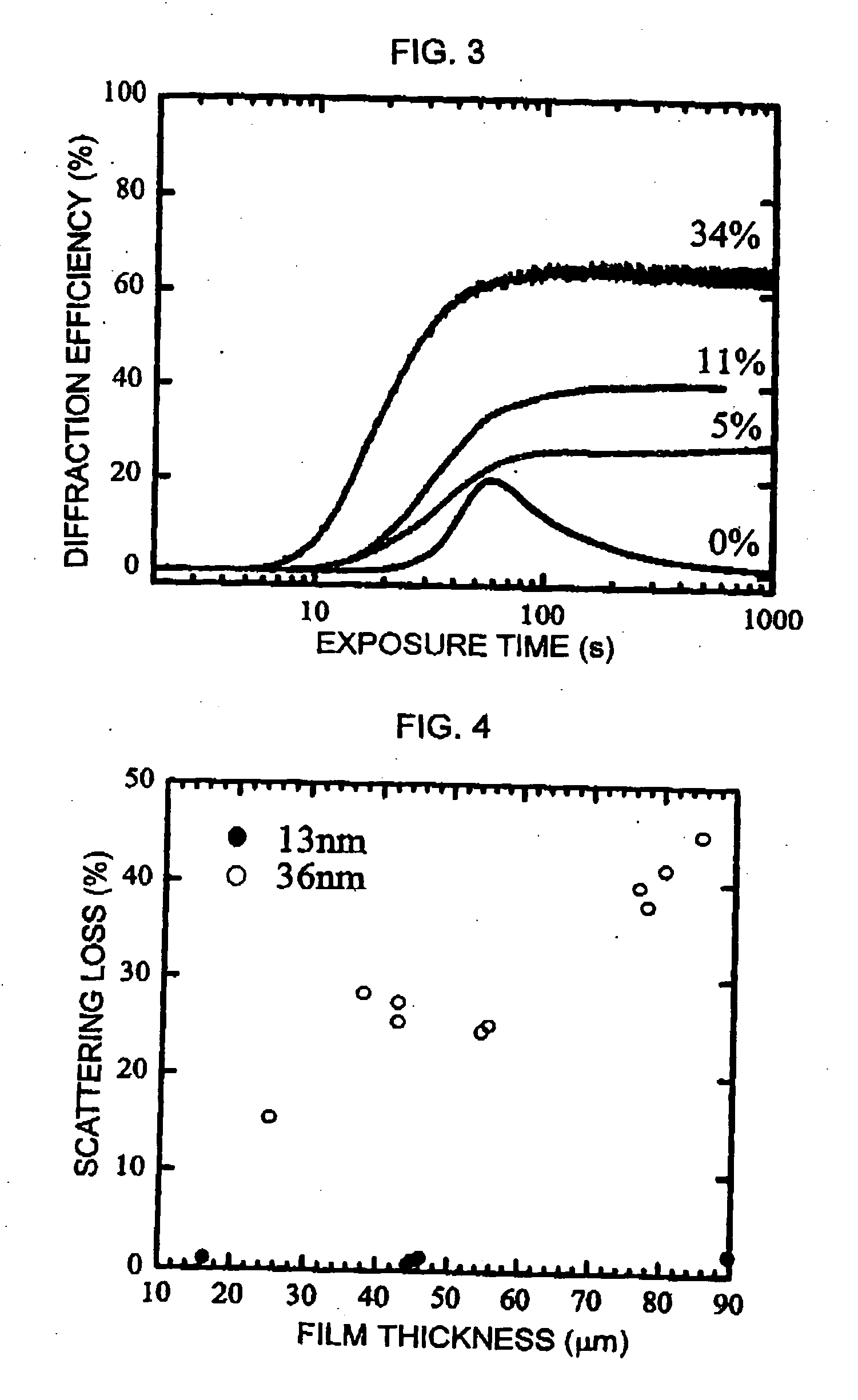Holographic recording material composition
a technology of recording material and composition, applied in the field of new holographic recording material composition, can solve the problems of complex process for producing holographic images, material heat resistance and transparency problems, and the problem of mechanical strength or environmental stability has not been fully elucidated, so as to achieve low light scattering loss and high diffraction efficiency
- Summary
- Abstract
- Description
- Claims
- Application Information
AI Technical Summary
Benefits of technology
Problems solved by technology
Method used
Image
Examples
example 1
Measurement of the Diffraction Efficiency
[0048] Ten gram (10.0 g) of silica sol (dispersed in methyl isobutyl ketone, 30 mass %) was added dmpwise with stirring in a solution prepared by dissolving 0.032 g of Irgacure 784 (trademark; a photopolymerization initiator; manufactured by Ciba Specialty Chemicals) in 3.16 g of polymerizable monomer (A) (p-bis(β-methacryloyloxy ethylthio)xylylene, and dispersed homogeneously therein.
[0049] The colloidal silica particles in the silica sol used had an average particle diameter of 13 nm (BET method).
[0050] The colloidal silica particles and the polymerizable monomer (A) in a polymerized state had refractive indices of 1.46 and 1.59, respectively, and thus the difference of the both refractive indices was 0.13. The silica particle had a density of 2.1 g / cm3, and thus the volume thereof was 2.7312.1=1.30 cm3. The polymerizable monomer (A) in a polymerized state had a density of 1.25 g / cm3, and thus the volume thereof was 3.16 / 1.25=2.53 cm3. T...
example 2
Measurement of the Diffraction Efficiency
[0054] A sample having a volume fraction of colloidal silica particles: 43% was prepared in a similar manner as that of Example 1, and the diffraction efficiency of the sample was evaluated.
example 3
Measurement of the Diffraction Efficiency
[0055] A sample having a volume fraction of colloidal silica particles: 11% was prepared in a similar manner as that of Example 1, and the diffraction efficiency of the sample was evaluated.
PUM
| Property | Measurement | Unit |
|---|---|---|
| particle diameter | aaaaa | aaaaa |
| refractive index | aaaaa | aaaaa |
| thickness | aaaaa | aaaaa |
Abstract
Description
Claims
Application Information
 Login to View More
Login to View More - R&D
- Intellectual Property
- Life Sciences
- Materials
- Tech Scout
- Unparalleled Data Quality
- Higher Quality Content
- 60% Fewer Hallucinations
Browse by: Latest US Patents, China's latest patents, Technical Efficacy Thesaurus, Application Domain, Technology Topic, Popular Technical Reports.
© 2025 PatSnap. All rights reserved.Legal|Privacy policy|Modern Slavery Act Transparency Statement|Sitemap|About US| Contact US: help@patsnap.com



